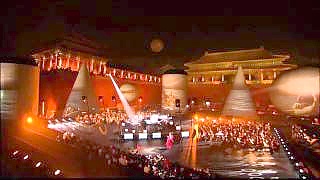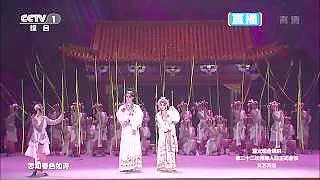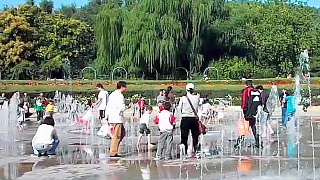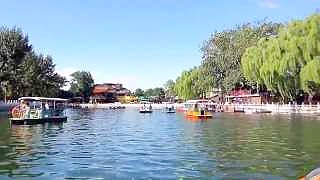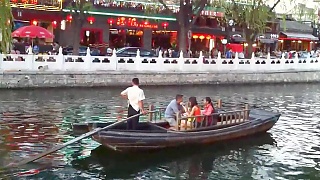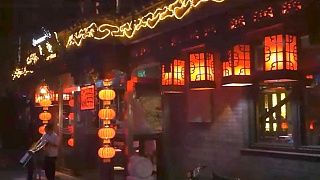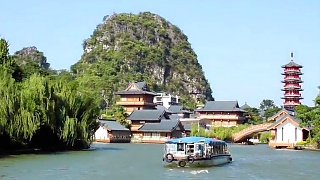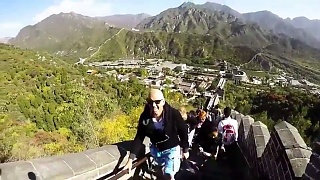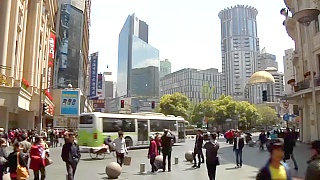For those who want to experience the local customs, as well as the history and culture, of Beijing, a visit to the HuTongs (alleys) and SiHeYuans (courtyards) is an indispensable part of a visit to Beijing.
[640],shadow=true,start=,stop=
The HuTong
A hutong is an ancient city alley or lane, typical in Beijing, where hutongs run into the several thousand. Surrounding the Forbidden City, many were built during the Yuan, Ming and Qing dynasties. In those times, the emperors planned the city and arranged the residential areas according to systems of etiquette. The center of the city of Beijing was the royal palace - the Forbidden City.
The word 'hutong' came from the Mongolian language about 700 years ago. It originates from the word 'hottog' in Mongolian meaning 'water well'. Where there was a spring or well, there were residents. The word 'hottog' became 'hutong' after it was introduced into Beijing.
Hutongs are the passages formed by lines of siheyuans (courtyards). One hutong connects with another, and siheyuan connects with siheyuan, to form a block, and blocks join with blocks to form a neighbourhood.
In ancient China, there was a clear definition for a street or lane. A 36 m wide road was called a big street (DaJie). An 18 m wide one was called a small street (Lu). A 9 m wide lane (or smaller) was called a hutong.
The shortest hutong is just 10 m long, and the narrowest hutong is only about 40 cm wide. Some hutong have more than 20 turns. Most of the hutongs in Beijing are in east-west or south-north directions. That resulted from the need for houses to face south so as to take in more sunshine.
The Weaver and the Cowherd
There are many stories and fairy tales about hutong. Near the Forbidden City, in the heart of Beijing lies a hutong called 'Girl Weaver', which is named after a fairy from the Heavenly Kingdom, who descended to the human world and married a cowherd. Her enraged father, the Celestial Emperor, took the girl back and separated the couple with the Milky Way.
Symmetrically, on the other side of the Forbidden City, there used to be a 'Cowherd Bridge'. In part, this tale suggests that emperors living in the Forbidden City are sons of Heaven.
In the rich and historical culture of Beijing, the hutong has a very special and important position. It is not only a kind of architecture, but also serves as a window into Beijing folk life and an embodiment of the history and culture of Beijing.
The SiHeYuan
A standard siheyuan consists of houses on all four sides. The house that stands at the north end facing south is called the 'main house or 'north house'. The ones on each side are called the 'side houses', and the one which stands at the south end facing north is called the 'opposite house' or 'south house'.
The siheyuan's entrance gate is usually at the southeastern corner, in accordance with the traditional concepts of the 5 elements that were believed to compose the universe, and the 8 diagrams of divination.
Normally there is a screen wall inside the gate so that outsiders cannot see directly into the courtyard; it is also believed to protect the house from evil spirits. Outside the gate of larger siheyuan, there is a pair of stone lions, one on each side. Such a residence offers space, comfort and quiet privacy. It is also good for security as well as protection against dust and storms.
The gates are usually painted vermilion and have large copper door rings. The courtyard often contains a pomegranate or other type of tree, as well as potted plants. Usually a whole family lives in the compound. The elder generation lives in the main house, the younger generation live in the side houses, and the south house is usually the sitting room or study.
From their size and style, one can tell whether a siheyuan belongs to ordinary folk or the powerful and rich. The simple house of an ordinary person has only one courtyard with the main building on the north facing, across the court.
The mansion of a titled or rich family would have two or more courtyards, one behind another, with the main building separated from the view of the southern building by a wall with a fancy gate or by a GuoTing (walk-through pavilion). Behind the main building there would be a lesser house in the rear and, connected with the main quadrangle, small 'corner courtyards'.
Not only residences, but also ancient palaces, government offices, temples and monasteries were built basically on the pattern of the siheyuan, a common feature of traditional Chinese architecture.
Once ubiquitous in Beijing, siheyuans and hutongs are now rapidly disappearing, as entire city blocks of hutongs are leveled and replaced with high-rise modern buildings. Residents of the hutongs are entitled to apartments in the new buildings, of at least the same size as their former residences. Many complain, however, that the traditional sense of community and street life of the hutongs cannot be replaced. However, some particularly historic or picturesque hutongs are being preserved and restored by the government.
Beijing, the capital city of China, is a vibrant metropolis steeped in history, culture, and modernity. Here's a brief overview of what you can expect as a tourist in Beijing:
Historical Landmarks:
The Great Wall of China: One of the most iconic structures in the world, the Great Wall is easily accessible from Beijing. Mutianyu and Badaling sections are popular among tourists.
Forbidden City (Palace Museum): A UNESCO World Heritage Site, this vast imperial palace complex was home to Chinese emperors for over 500 years. It houses numerous halls, courtyards, and historical artifacts.
Temple of Heaven: A masterpiece of Chinese architecture, this ancient temple complex served as a place of worship for emperors to pray for good harvests.
Summer Palace: A stunning ensemble of lakes, gardens, and palaces, the Summer Palace served as a retreat for emperors during the Qing dynasty.
Tiananmen Square: One of the largest city squares in the world, Tiananmen Square is flanked by important landmarks such as the Monument to the People's Heroes, the Great Hall of the People, and the Mausoleum of Mao Zedong.
Cultural Sites:
Beijing Hutongs: Explore the narrow alleyways and traditional courtyard residences of Beijing's historic neighborhoods. You can take a rickshaw tour or simply wander around on foot.
Beijing Opera: Experience traditional Chinese opera performances at venues like the Liyuan Theater or the Chang'an Grand Theatre.
798 Art District: A hub of contemporary art and culture, this former industrial area is now home to numerous galleries, studios, and cafes.
Modern Attractions:
Olympic Park: Visit iconic structures such as the Bird's Nest (National Stadium) and the Water Cube (National Aquatics Center) from the 2008 Beijing Olympics.
CBD (Central Business District): Marvel at the futuristic skyline of Beijing's modern business district, which includes landmarks like the CCTV Headquarters and the China World Trade Center Tower III.
Culinary Delights:
Peking Duck: Indulge in Beijing's most famous dish, crispy roast duck served with pancakes, scallions, and hoisin sauce.
Street Food: Explore the city's vibrant street food scene and sample local delicacies like jianbing (savory crepes), lamb skewers, and dumplings.
Practical Tips:
Transportation: Beijing has an extensive public transportation system, including the subway, buses, and taxis. However, traffic can be heavy, so plan your travels accordingly.
Language: While English is not widely spoken, especially outside tourist areas, many signs and transportation announcements are in English. It's helpful to carry a translation app or a phrasebook.
Weather: Beijing experiences four distinct seasons, with hot summers and cold winters. The best times to visit are spring (April to June) and autumn (September to October) when the weather is mild and comfortable.
Etiquette: Respect local customs and traditions, such as removing your shoes before entering someone's home and using both hands to pass or receive items.
Beijing offers a rich tapestry of experiences for tourists, blending ancient heritage with modern innovations. Whether you're fascinated by history, culture, or culinary delights, there's something for everyone in this dynamic city.
 Beijing’s Hutongs and Courtyards
Beijing’s Hutongs and Courtyards


